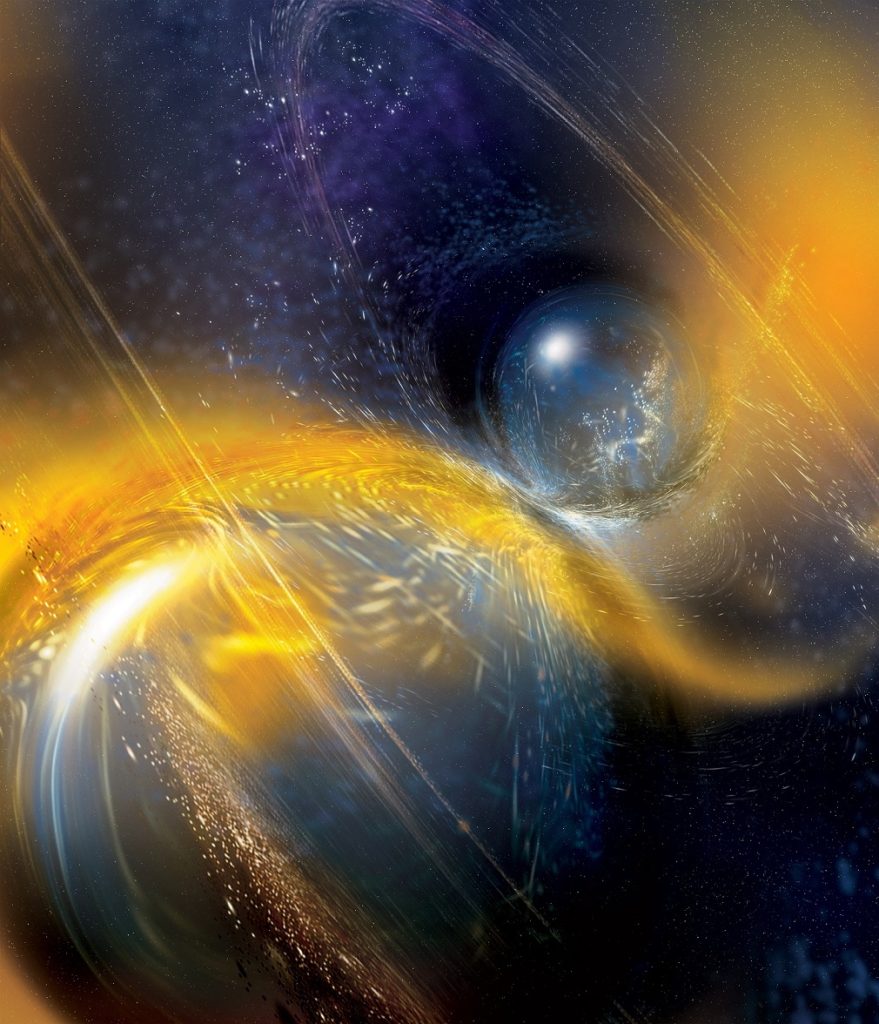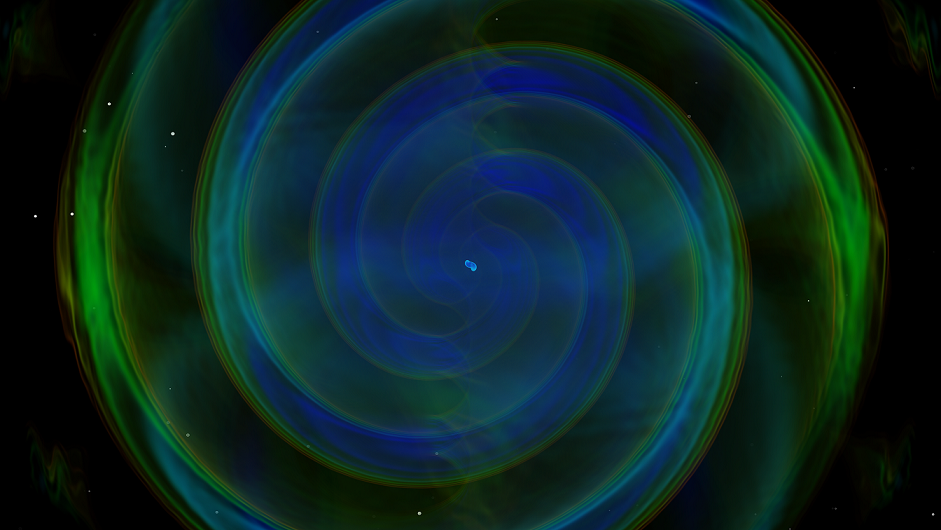ITGN researchers reaching for the stars –
Made a key contribution to the LIGO discovery of the heaviest binary neutron star system
IITGN’s PhD student in Physics Mr Soumen Roy’s research paper, written in collaboration with a B.Tech Mechanical Engineering student Mr Nilay Thakor (batch of 2013), under the guidance of Prof Anand Sengupta, is cited in the recently published discovery paper
The team of researchers at IIT Gandhinagar provided a highly optimized template bank for both the online and offline search pipelines, a key component of the search which lead to this discovery
Gandhinagar: A team of researchers at the Indian Institute of Technology Gandhinagar (IITGN) have made a significant contribution to the LIGO discovery of the heaviest binary neutron star system GW190425. The results of this discovery were recently announced and presented at the 235th meeting of the American Astronomical Society in Honolulu, Hawaii. The team at IITGN lead by Prof Anand Sengupta, Assistant Professor, Physics,included PhD student in Physics discipline, Mr Soumen Roy and BTech student (batch of 2013) Mr Nilay Thakor.

IITGN’s PhD student Mr Soumen Roy has been made an author in the research study submitted to The Astrophysical Journal Letters that is authored by an international team comprised of the LIGO Scientific Collaboration and the Virgo Collaboration, as a recognition for his contributions to this discovery. Soumen’s research paper, written in collaboration with a B.Tech Mechanical Engineering student Nilay Thakor (batch of 2013), under the guidance of Prof Anand Sengupta, provided a key module for the search that resulted in this significant discovery.

The IIT Gandhinagar group created and provided a highly optimized template bank for both the online (low-latency) and offline LIGO search pipelines, a key component of the search, which was then used in the advanced-LIGO O3 searches which lead to this discovery.
What are template banks?
A template bank is a grid of theoretical signal shapes against which the noisy data is matched, so as to reliably extract faint signals which may lie buried therein. The challenge was to create the smallest footprint in terms of the bank size while making sure that there was adequate coverage to astrophysical signals and that there were no “holes” left in the search space. The team drew inspiration fromLord Kelvin’s famous “sphere-covering” problem to map the task at hand to its geometrical analogue.
Sharing his thoughts on this discovery and achievement of his students, Prof Anand Sengupta, Assistant Professor, Physics, IITGN, said, “The discovery of systems like GW190425 poses new challenges in astrophysics. It would steer the attention of researchers to find new formation channels of such unusual systems. Science is exciting because of the unknowns that you stumble upon – and here is a big one. I am elated that my students made this critical contribution to this discovery. It is also satisfying that undergraduate students can make cutting-edge scientific contributions through collaborative research.”
Elated by this achievement, Soumen Roy, PhD student in Gravitational Wave astronomy, IITGN, expressed, “I am very excited to see my work featured in the recent detection of the gravitational-wave signal from the merger of the most massive binary neutron star system. I was involved with every aspect of developing and testing the optimized template placement algorithm that was used in the LIGO search pipelines, a task that has taken more than half of the tenure of my PhD! In future, I would like to work on devising new tests of Einstein’s theory of general relativity using gravitational-wave observations of compact binary coalescences.”
Equally delighted, Nilay Thakor, a B.Tech alumnus of IITGN from 2013 batch of Mechanical Engineering, said, “It is inspiring to see what started as an undergraduate research project to be featured in the detection of neutron star collision. It is very encouraging for my further work, as it was my first publication. In future, I am interested in examining what role artificial intelligence could play in improving the detection of gravitational waves.”
Soumen Roy is finishing his PhD thesis at IITGN and preparing for a stint as a postdoctoral researcher. Nilay Thakor is now an MS student in Applied Math and Statistics at Johns Hopkins University, USA.
About the discovery – the heaviest binary neutron star system GW190425:
Neutron stars are the remnants of dying stars that undergo catastrophic explosions as they collapse at the end of their lives. When two neutron stars spiral together, they undergo a violent merger that sends gravitational shudders through the fabric of space and time.
On April 25, 2019, at 1:48 pm Indian Standard Time (IST); the network of advanced LIGO gravitational-wave (GW) detectors in the USA and the Advanced Virgo detector in Italy, detected a signal, named GW190425. This was the second observation of a gravitational-wave signal consistent with the merger of a binary-neutron-star system. This system is notable for having a total mass exceeding that of known galactic neutron star binaries and is the first confirmed gravitational-wave detection based on data from a single observatory.

The first such observation, which took place in August 2017, made history for being the first time that both gravitational waves and light were detected from the same cosmic event. The April 25 merger, by contrast, did not result in any light being detected. However, through an analysis of the gravitational-wave data alone, researchers in the LIGO Scientific Collaboration have learned that the collision produced an object with an unusually high mass. Apart from its massive weight (as far as BNS systems go), the discovery of GW190425 suggests that there is a new population of binary neutron star systems with sub-hour orbital periods, which are not detectable by current electromagnetic surveys.



